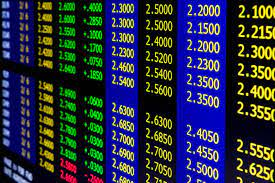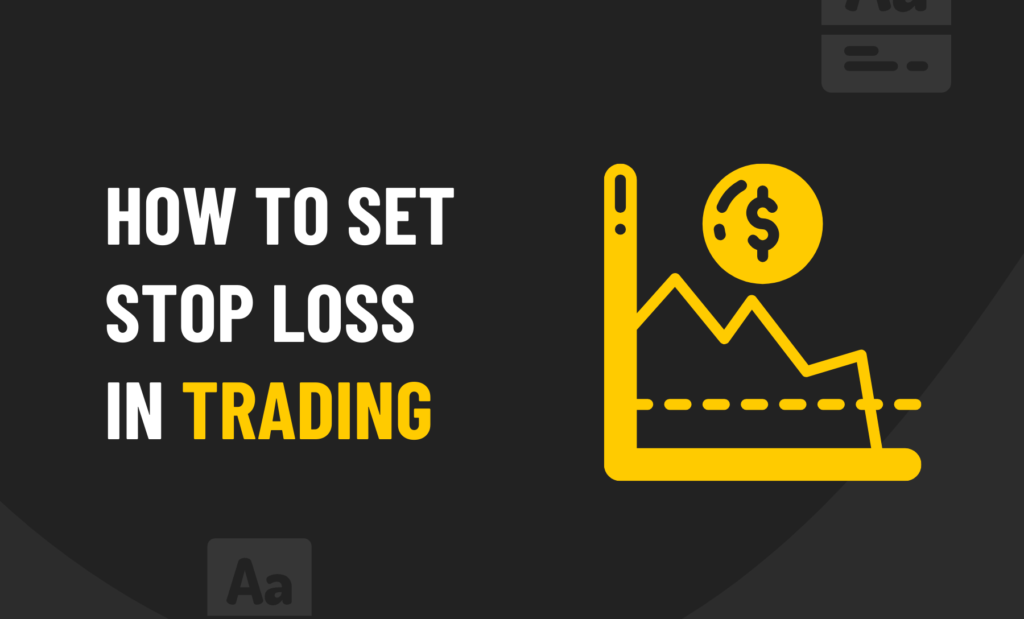Stop-loss is a common trading strategy used to minimise the risk of loss by setting a limit on the loss you are willing to take.

A stop-loss order is an order to buy or sell a security when its price reaches a specified point, known as the stop price. Once the stop price has been reached, the order becomes a market order and will be filled at best available current price.
Having an exit strategy will help you limit your risk when trading. Stop-loss orders are crucial for maintaining a plan when trades go against you. Your trade will exit once the stop-loss has been reached, causing your trade to be off-balance.
As an example, here’s what I mean. Your stop-loss order will execute when the price reaches $19.50 if you buy a stock at $20 and place a stop-loss order at $19.50. Your order won’t execute if it doesn’t dip below $19.50.
Market Orders
Market orders are typically stop-loss orders, which means that any price you can get once the price reaches $19.50 (whether the bid, ask, or the last price touches $19.50) will be considered. It is possible that you will end up with a worse price than expected if no one wishes to buy the shares from you at that price. Often times this is referred to as slippage. In general, slippage is not an issue if you trade stocks, currencies, or futures contracts with high volumes.
Limit Orders
Limit orders of stop-loss are another type of stop-loss order.
Your broker will automatically place a limit order to close the position at the stop-loss price or at a better price when an asset reaches your stop-loss price. The stop-loss limit order is different from the stop-loss market order because it will close the trade at any price. Instead, the trade will only close at the price of the stop-loss. Slippage is thus eliminated (usually not a problem), but there is a bigger problem: You are not allowed out of the trade when the price is moving aggressively against you.
Placing Stop-Loss Orders When Buying
Place the stop-loss order at a level that is not random. Stop-loss positions are ideal if you want to allow for some fluctuation without being sucked into a losing position.
In order to place a stop-loss order when buying, you should place it below a “swing low.” A swing low happens when a price falls and bounces back up. It indicates that support has been obtained in that area. A trend-following trade is recommended. Make sure that the swing lows are moving up as you buy.
When Selling Short, where Should You Place a Stop-Loss Order?
Stop-loss orders on short sales should not be placed randomly, just as they are for buying a stock. Keeping the market as flexible as possible while ensuring your safety is crucial.
In short sales, unlike buying, stops-loss orders typically fall just above swing highs. Like swing lows finding support at bottom price levels, swing highs find resistance at higher price levels. Prices rise and fall this way. A trend-following trade should be conducted. The swing highs should move down when looking for short trades.
Stop-Loss Orders at Alternative Points
Stop-loss orders need not be placed above or below a swing high or low, nor must they be placed below a swing high when shorting or buying. Your stop-loss placement may be at a different spot on the price chart, depending on your entry price and strategy.
Stop-loss levels can be set by technical indicators. Using a stop-loss order, you can place a buy order (or “go long” signal) at a price level where the indicator no longer recommends longing the stock.
Stop-loss levels are also commonly set based on volatility. Market participants can use an indicator such as the Average True Range to determine how much price usually moves over time. Traders may adjust their stop-loss based on volatility in order to adjust their stop-loss outside of normal fluctuations. A stop-loss and profit target can be set based on the typical price movements of a given day without using an indicator.
Establish a Stop-Loss Strategy
There should be no random placement of stop-loss levels. It is important to test and practice multiple methods before deciding where to place a stop-loss. Experiment to determine what is the best strategy for you.
Define how you will enter and exit trades and control risk as part of your trading strategy. In order to be a successful day trader, you must identify the trend direction and control risk. Start with simple trades. Invest in the overall trend, and use a simple stop-loss strategy that allows you to profit if the price moves your way but forces you to cut your losses easily if it moves against you.
Conclusion: How to Trade Safely by Setting the Correct Stop Loss Level

A stop-loss order is an order to sell a security when it reaches a certain price. It limits an investor’s loss on a given security.
The idea behind the stop-loss level is that you should set the price at which you want to exit the trade, and if the market goes against your position, you will be out of it at this predetermined level.
The following are some of the ways in which a trader might use a stop loss:
- To limit losses on long positions
- To limit losses on short positions
- To lock in profits on long positions
- To lock in profits on short positions
Frequently Asked Questions
Why shouldn’t you trade on FOMO?
FOMO is a powerful emotion that can have a significant impact on the decisions we make. We often believe that we need to act now and buy something before it’s sold out. But FOMO is not always a good thing. It can lead to bad decisions, like trading on cryptocurrencies or getting into an investment because there is hype around it.
In order to avoid making rash decisions because of FOMO, it’s important to understand what the acronym stands for and how it affects our behaviour.
Do we need to put stop-loss every day?
The answer is yes, we need to put stop-loss every day because it is the only way to protect our investment. If we don’t put stop-loss, we will be in great trouble. Stop-loss will protect us from the fear of losing money and keep us from becoming greedy.
Do professional traders use stop-loss?
A stop-loss is a trading order that becomes activated when the asset price falls to a certain level. It is used by traders who have taken a long position on an asset to limit their losses in case the market moves against them.
Professional traders use stop-losses as they cannot monitor their trades in real-time, and many have to trade on multiple markets at once. They need a way to control their risk and stop themselves from losing too much money if they make an error.



